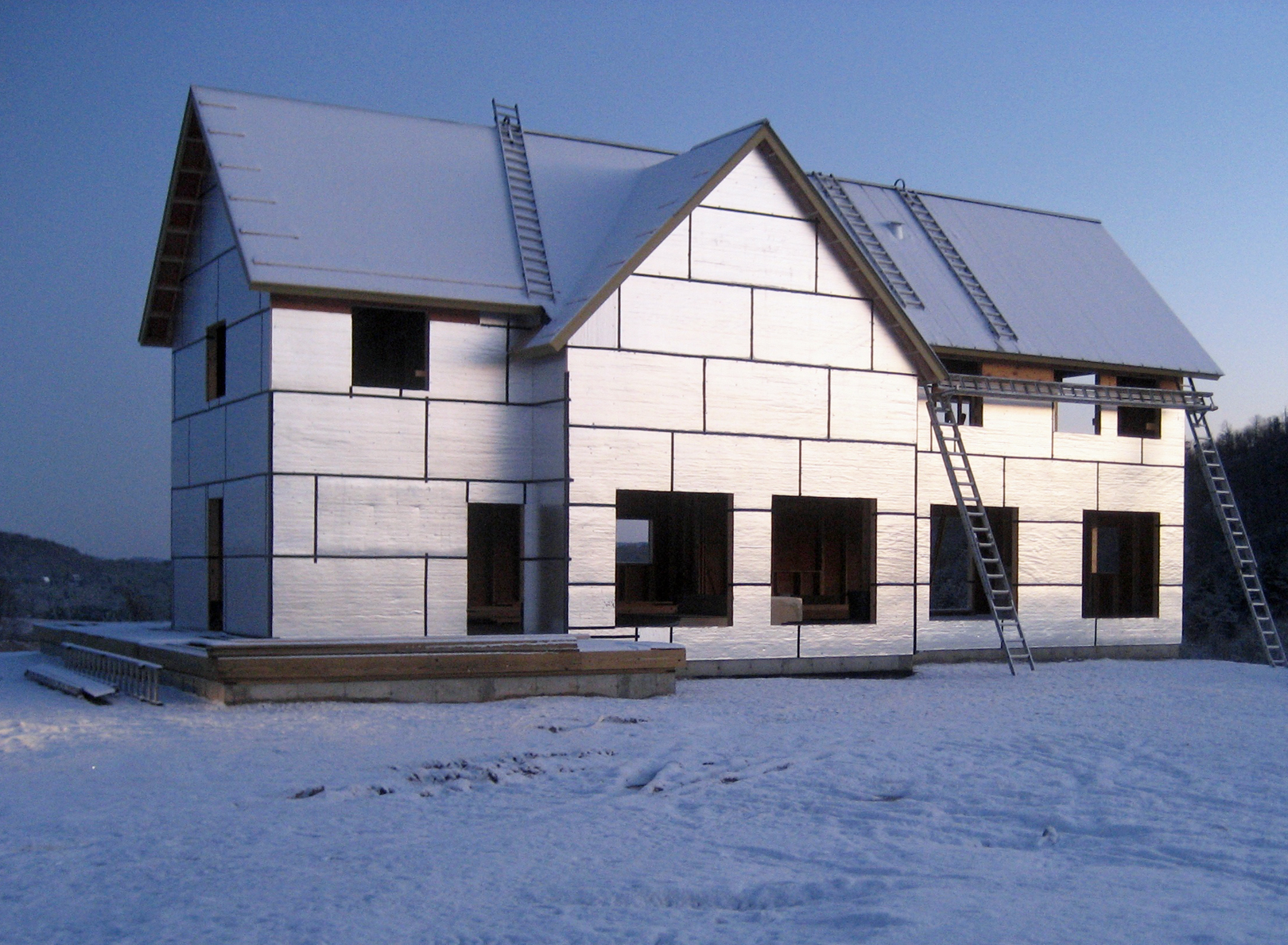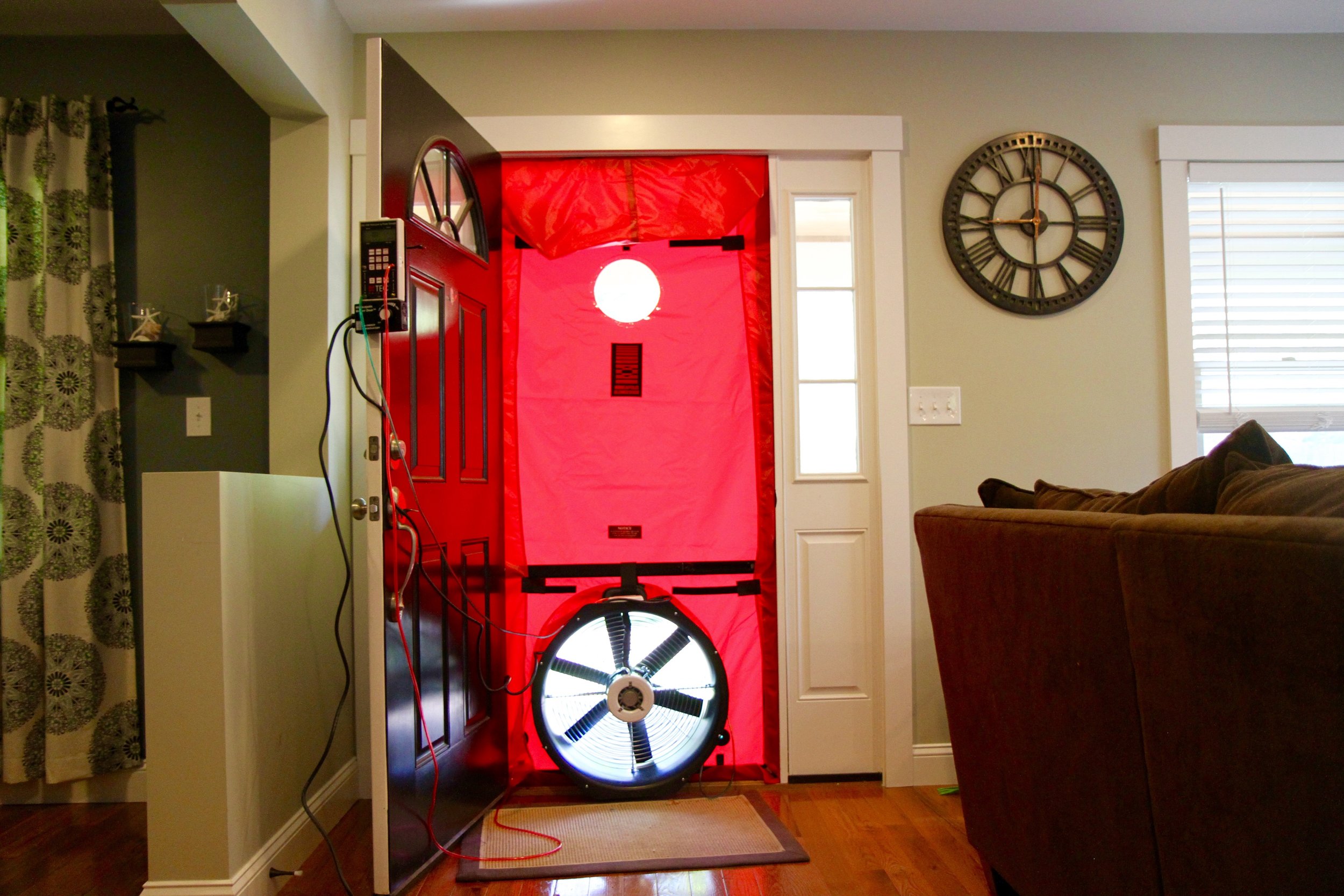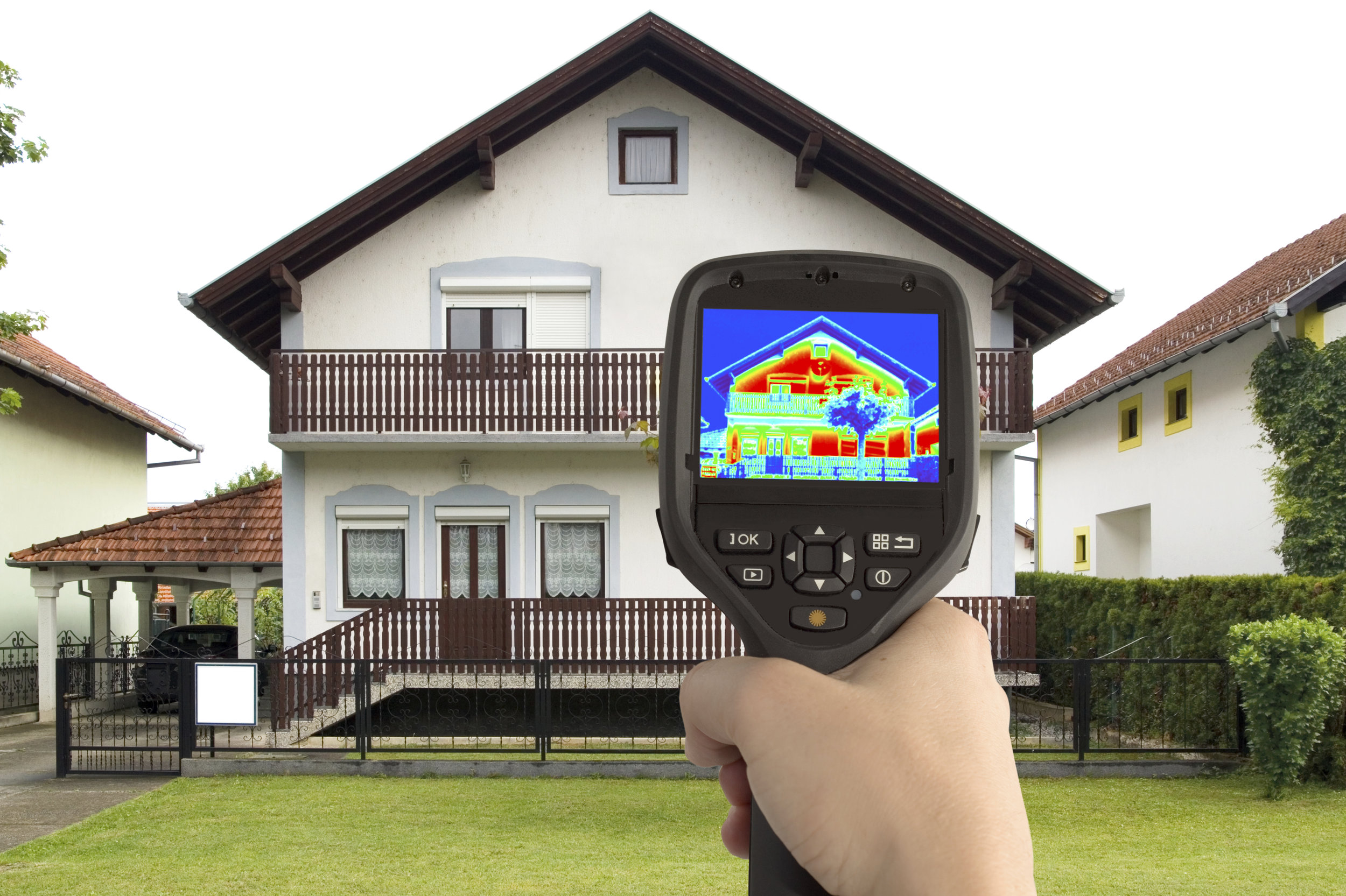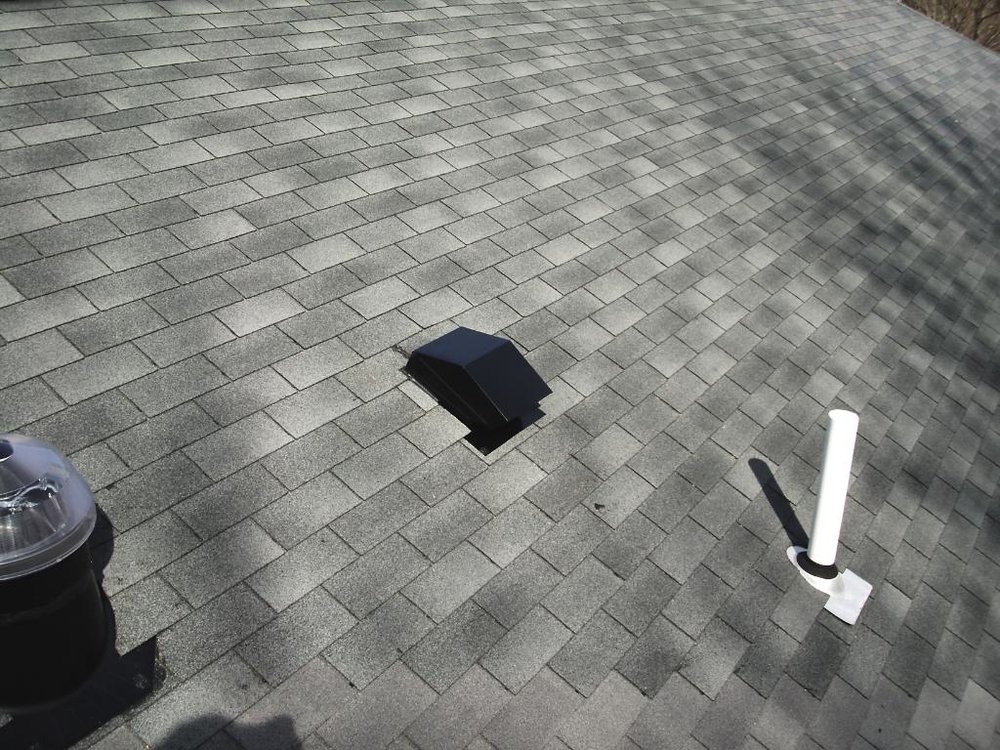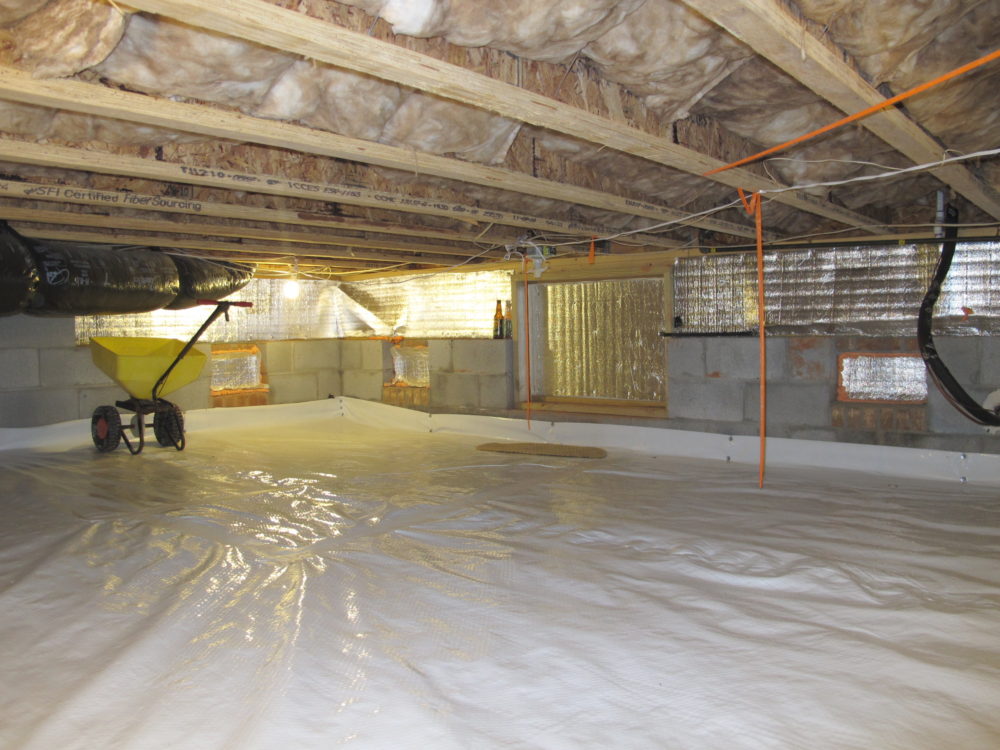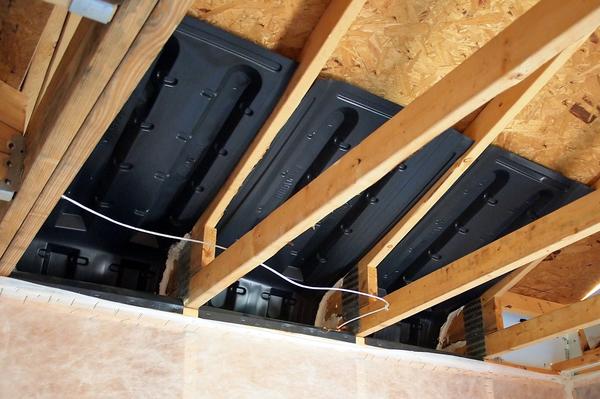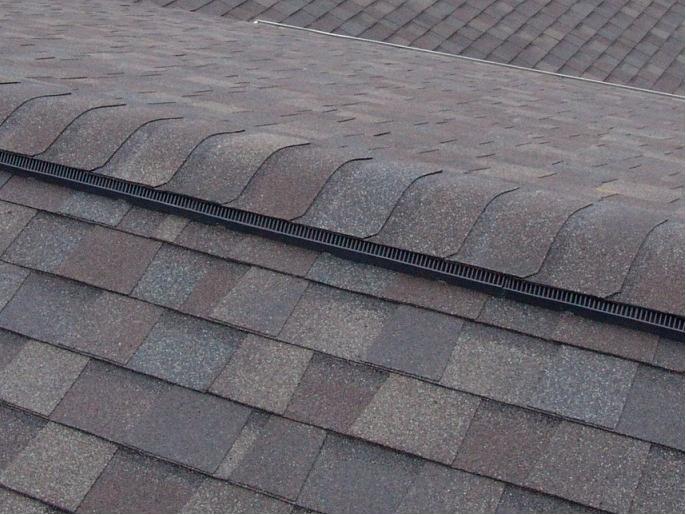Get to Know Your Home
Before you decide on which insulation you would like to use, it's helpful to know how a house performs, the critical areas to air seal and insulate, as well as the ventilation required to assure a healthy home.
As the infographic to the left depicts, outdoor air enters a home (infiltration) through the building envelope, mainly the sill of a basement, penetrations through basement walls (oil, electrical, and gas service lines, etc.), at the band joist (area between floors) and leaky windows and doors. Depending on the time of year, the air entering your home can carry moisture, dust, and allergens. Exfiltration on the other hand, is when indoor conditioned air escapes outside, mainly through penetrations in your ceiling to your attic. Either way, when one or both areas are not air sealed correctly, indoor air quality problems, condensation, excess energy use, and comfort complaints may arise. Therefore, air sealing is a cost-effective way to cut heating and cooling costs, improve durability, increase comfort, and create a healthier indoor environment.
Once the building envelop of a home has been properly air sealed, adding insulation is the next step in improving efficiency and comfortability. Measured in R-Value, a quantitative measure of an assembly or material resistance to heat flow for a unit temperature difference and a unit area, insulation slows the transfer of heat through conduction, convention and radiation thus keeping your house warmer in the winter and cooler in the summer.
After a house is properly air sealed and has a deep layer of insulation, it is imperative to mitigate and control sources of moisture as well as calculate ventilation for unconditioned attics. In many retrofit applications, typically older homes, it is common to find dirt crawlspaces, which are a major moisture concern. Sealing this area with a vapor barrier keeps moisture at bay and greatly reduces the risk of a variety of problems that may arise. Venting bath and kitchen fans help expel combustion gases, moisture and odors. Adding attic ventilation if necessary helps cold weather homes like we have in the northeast to maintain a cold roof temperature to avoid ice dams created by melting snow and to expel any moisture that moves from the conditioned living space to the attic.
Whether residential or commercial projects, we offer holistic solutions to meet your energy efficiency goals. Additionally, as a Mass Save Partner and income eligible Weatherization Assistance Program contractor, many of our services include generous rebates and incentives when energy efficiency upgrades are made.
Products We Install
Spray Foam
There are two types of foam insulation we install in residential and commercial building projects: closed and open cell. Closed cell foam is both vapor and air impermeable and offers a R-value of between 6.8 to 7.5 per inch. Open cell foam on the other hand is air impermeable and offers a R-value of between 4.1 and 4.5 per inch. Despite these important differences, both provide excellent air sealing, good to excellent insulation properties, while commanding a moderate to premium installed price.
What's in Your Foam?
Do you know closed cell foam use blowing agents that help achieve superior insulating properties? Do you know these blowing agents can be very harmful to our environment? Measured in Global Warming Potential (GWP), how much heat a substance can trap in the atmosphere, all but two brands of closed cell foam utilize blowing agents ranging from a GWP of 725 to 1030. At ESHP, we care about the environment and only install premium foam products, those having the very least environmental impact. With a GWP of 1, whether SWD Quick-Shield 144 or Gaco One Pass Low GWP, you can rest assured that the closed cell foam installed by us will help you achieve your energy efficiency goals, while having minimal impact on the environment.
Our open cell foam of choice, UTC, contains no ozone depleting chemicals, gases, fibers of asbestos, and because of it's high R-value (4.1 per inch), a 2x6 cavity achieves an R value of 22.5.
Thermal Barrier Coating
As with any premium service or product, paying special attention to the details is vital to establishing a sound reputation. When installing spray foam that will be left exposed in an area that contains mechanicals (e.g. air handler, furnace, boiler, etc.) or is deemed accessible for storing items, a intumescent coating, commonly referred to as a thermal barrier, is required by code. Providing a 15 minute fire barrier, the intumescent coating must be certified to work with specific brands of foams; in our case, No Burn Plus intumescent coating is approved for all the products we install.
Cellulose
A go-to choice for green builders, cellulose is made from ground up newspaper, containing between 75% to 85% recycled content. Great for both retrofit and new construction projects, cellulose offers low to moderate air sealing properties, comparable R-values, nontoxic fire retardants, sound reducing properties, and a low to moderate installed cost.
Our preferred product: Cellpak Supreme Cellulose
fiberglass
The most common insulation found in existing homes across the country, fiberglass is made from fiber-reinforced plastic. A cost effective solution, fiberglass offers comparable R-values, but poor air sealing properties. Getting the installation details correct is critical as its overall effectiveness is dependent on this.
Our preferred product: Knauf Ecobatt Fiberglass
Rockwool
Rockwool is a fire-resistant insulation that's made from stone. Rockwool does not support mold or fungal growth, it doesn't burn or release toxic gases or smoke when exposed to high heat, provides average to above average R-values, and provides sound reducing properties. A moderately priced and installed product, Rockwool is commonly found in wall, rim joist, and between floors as a sound dampening and fire stop solution.
Our preferred product: Rockwool
Rigid Foam
Great for a continuous insulation barrier on exterior walls, foundations and roofs or to encapsulate fiberglass in knee walls or crawlspace ceilings, rigid foam provides excellent insulation and air sealing properties when seams are taped or foamed. Although rigid foam commands a moderate installed price, it can greatly improve overall insulation R-values and can extend the life of other building materials.
Our preferred product: Dow Thermax
Complimentary Services
Diagnostic testing
From blower door to thermal imaging and combustion safety testing, we are able to provide customers with critical information about their home. Is the current insulation adequate, are there opportunities to reduce how "leaky" a home is, are the combustion appliances operating efficiently and safely? These are but a few of the questions we can provide definitive answers and solutions to.
Ventilation and moisture mitigation
When considering insulation upgrades, assuring proper ventilation is critical to the overall health of the home. Why? Weatherization services change the dynamics of how a home performs. By air sealing, we create a "tighter" home. By adding insulation, homes become warmer or cooler depending on the season. Therefore, it is critical to address any moisture concerns, specifically ventilating bath, dryer, or kitchen fans to the exterior or adding attic ventilation to provide excess heat or moisture a path to escape.
insulation removal
Some homes contain attic insulation that is littered with debris, rodent droppings, signs of mold or mildew or is so deteriorated, that it is time to remove and start fresh. Our powerful insulation removal vacuum quickly removes these contaminants providing you with a clean and safe starting point for your new insulation project.






